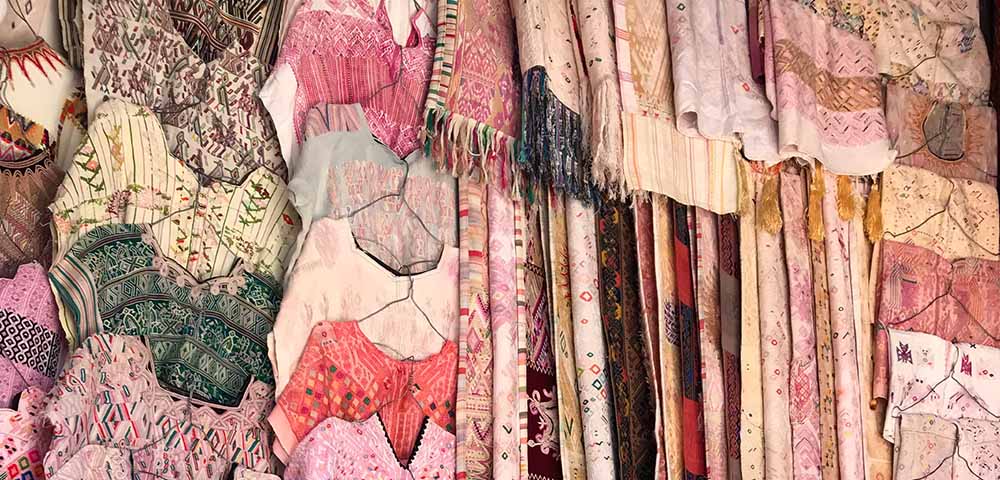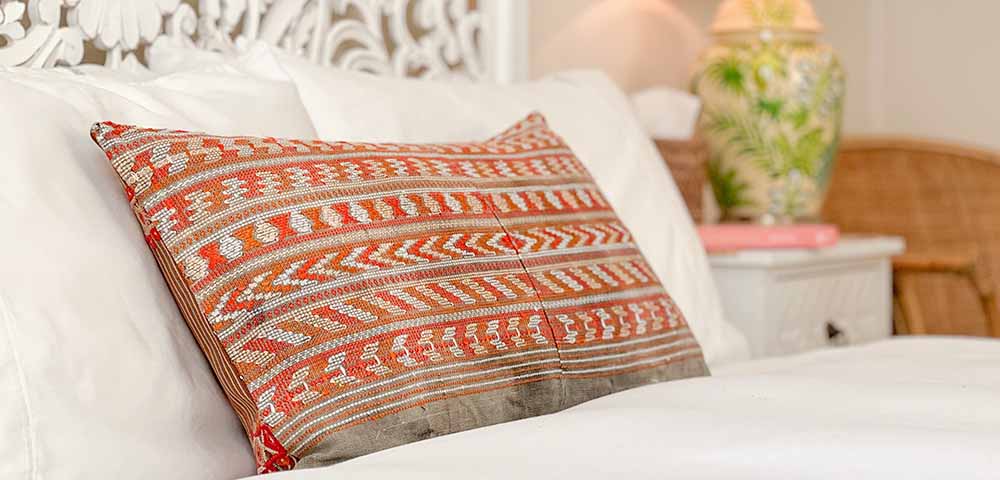Guatemalan textiles - The best designs and colours for interior decor - Part II

In part two of my three part series on Guatemalan textiles I will delve into the vast variety of textiles produced in the Chichicastenango and Nahuala regions. Both these regions are highly populated and continue to produce a large amount of extraordinary textiles. One of the best places to source these textiles is at the Panajachel Bombero market on Tuesday and Friday mornings.
Chichicastenango Textiles
Chichicastenango textiles are the most common design that is exported to the west. Patzun is perhaps the second most common. This is because the designs and the thick sturdiness of the embroidered fabric translate extremely well into bags and purses.
Chichi has three very distinct and different styles. Their Geometric designs are the most prolific, with the florals coming a close second, and their bird and animal designs last.
I am a huge fan of all Chichicastenengo designs, but most of them are so bright and with so many colours in the one piece that I can’t see them working easily in most living spaces.
When I find one in a muted (for Guatemala) colour palette I’m always so thrilled. I feel the simpler colour scheme really showcases the beauty of the various exquisite designs Chichi is famous for.
 Chichi textiles are the perfect example of what wouldn’t work for a pillow, but works beautifully for a statement bag or purse. If you look closely you’ll see the geometric designs below are very similar to the pillows above, but the colour scheme is basically a rainbow which makes them hard to decorate with.
Chichi textiles are the perfect example of what wouldn’t work for a pillow, but works beautifully for a statement bag or purse. If you look closely you’ll see the geometric designs below are very similar to the pillows above, but the colour scheme is basically a rainbow which makes them hard to decorate with.
However as a statement boho bag they are sensational.

I feel that most Chichi huipiles aren't flattering to wear. The embroidery and cotton weave are very thick and stiff so the fabric doesn't fall in a flattering way, but rather bunches awkwardly. It’s that very thickness that makes this textile so perfect for bags, pillows, even shoes.
The only exception is when the huipil has been woven with a mix of rayon - shown in the top left image, then the huipil falls softly.

Chichicastenango Florals
I have always chosen geometric or tribal over floral in my personal taste, however I could not ignore the incredible beauty of many of Chichi’s floral textiles and just before I left I picked up a handful of florals and fell completely in love with them. Chichicastenango embroidery is like tapestry, making the textiles very rich and textured.
 Florals like any pattern are a very personal choice. If you adore all things floral then any of the below 6 huipiles I found on google would probably be amazing. However I would only buy the textiles in one of the two rows. Can you pick which row?
Florals like any pattern are a very personal choice. If you adore all things floral then any of the below 6 huipiles I found on google would probably be amazing. However I would only buy the textiles in one of the two rows. Can you pick which row?

If you chose the bottom three textiles you were correct. I like the left pastel huipil because the colour palette on white background is extremely rare. And the other two because the flowers really stand out as amazing quality. The top three are all lovely but to me nothing really stands out in any of them.
Chichicastenango Tzute
Perhaps the most playful of all Guatemala designs is the Chichicastenango Tzute. A ceremonial or all purpose cloth, usually 2 pieces sewn together to make a square, often with a gorgeous randa embroidered over the seam. From deer, to birds, to dancing horses and even double headed dragons embroidered over cheerful stripes, these are a sought after vintage textile indeed.
 However the vast majority of Tzute’s are an incredibly bright red with primary colours embroidered all over. Only the antique tzute's from the time when natural dyes were in use (not common now) have faded beautifully to offer a gorgeous array of aged reds, and soft pinks. I would never buy the below tzute’s because the red is too bright and the randomness of the other colours is too great to work seamlessly into a decor setting.
However the vast majority of Tzute’s are an incredibly bright red with primary colours embroidered all over. Only the antique tzute's from the time when natural dyes were in use (not common now) have faded beautifully to offer a gorgeous array of aged reds, and soft pinks. I would never buy the below tzute’s because the red is too bright and the randomness of the other colours is too great to work seamlessly into a decor setting.

Nahuala
I feel like Nahuala’s abstract style which often seems quite spacious really lends itself well to home decor. There is a great variety within their designs and its due to the region being so large and individual towns developing their own distinct styles.
I have purchased more Nahuala than any other regions textiles, partly due to Nahuala being quite close to Lake Atitlan where I lived so I had easy access to these textiles, and also due to the sheer abundance of them in a great variety of designs.
 I feel that for pillows you can’t really go wrong the Nahuala huipiles. I would watch for too many colours that don’t blend - like the 2 colourful huipiles on the bottom layer of the below image of textiles I found on google.
I feel that for pillows you can’t really go wrong the Nahuala huipiles. I would watch for too many colours that don’t blend - like the 2 colourful huipiles on the bottom layer of the below image of textiles I found on google.
Nahuala also does a lot of mauve / purple, which can be a hard colour to place in a decor setting. Pink is their most popular colour and fortunately is always going to be easy to decorate with.
The other difficulty I came across is that they have a tie dye style that we in the west view as ‘colour run’. They deliberately embroider with coloured cotton they know will run over the white cotton. You have to cut most of this out when making pillows.
Another issue is that often there is not enough embroidery to make a couple of pillows. See brown huipil in the middle row, I love the colour and design but the shape and size make it basically impossible to make a pillow.
One aspect of the Nahuala huipiles that is perfect for making pillows is the construction of the huipil is nearly always two pieces of fabric sewn together down the centre with the seam left undone at the neck hole. In this instance I'm not having to deal with a round neck hole in the centre of my precious textile which usually means sadly cutting out the shoulders.

When it comes to wearing huipiles Nahuala's are an easy choice with their light flowing cotton and fun tribal designs. The pastel ones are highly sort after in a tropical climate like Byron Bay, but also more likely to show stains and damage. The deeper and richer colours are more popular in colder climates. The colourful huipiles below with the soft rayon/cotton mix are such an easy and fun bohemian top to wear with jeans.

Xejuyup
I feel that this particular design is unusual for Guatemala, to my mind it has a more European look due to the symmetry and sameness of the design, as well as the simple colour palette. These huipiles are hard to source as the town is small. It is very close to Nahuala so often this design is classified as a Nahuala design, but as you can see from above, ‘Nahuala’ encompasses a large array of different designs due to the size of the region. I love how this beautiful gentle design works in so well with some of the other stronger, more ‘out there’ Guatemalan designs.
 This completes part two of my Guatemalan Textile series.
This completes part two of my Guatemalan Textile series.
The link below is to part three where I will be exploring the various textiles found in 5 regions - Colotenengo, Nebaj, San Lucas, Xela and Santa Catarina.
https://lamourartisans.com/pages/guatemala-textiles-the-best-designs-and-colours-for-home-decor-part-3
Willow xx


